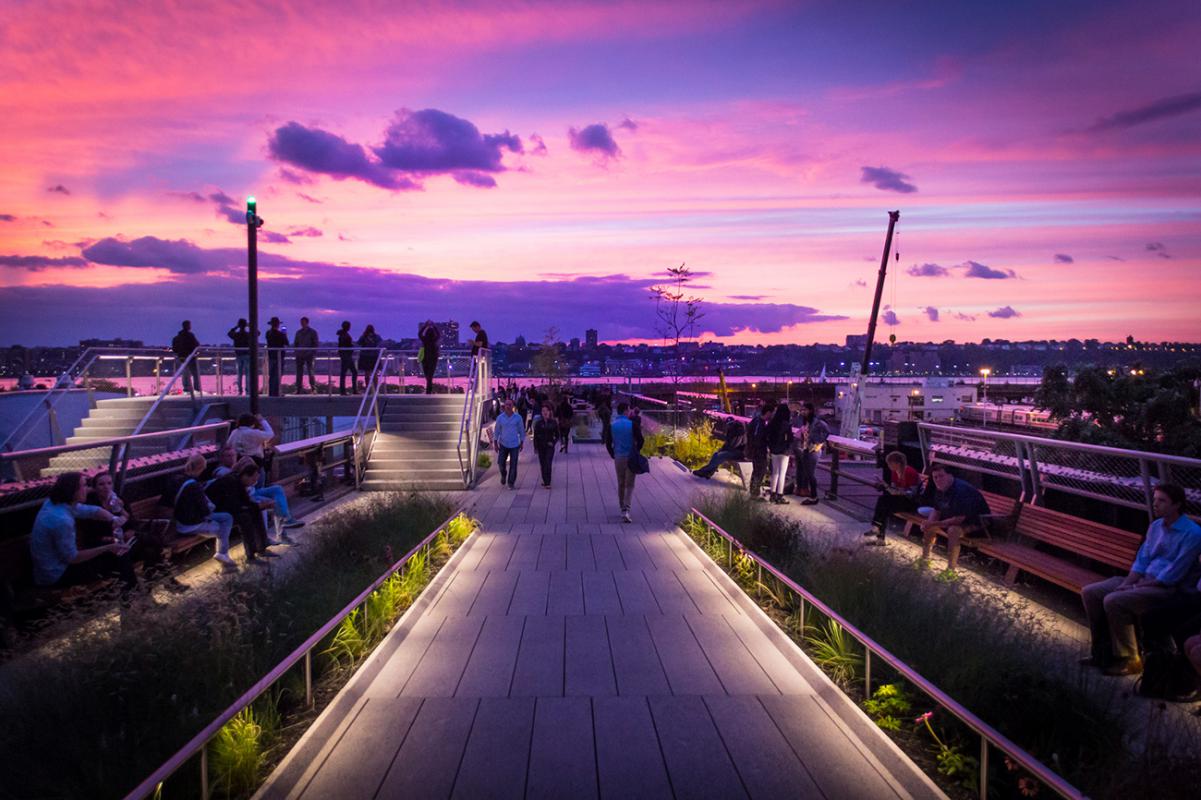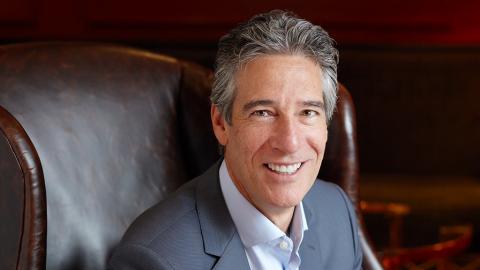
The world is changing and as technology improves and the culture and routines of everyday life evolve, products must progress in order to stay desirable and remain on the market. The same is true for our cities; their adaptability will assure their relevance and resilience amid the seismic shifts in our society, culture and lifestyle.
For the past 30 years I’ve had a front-row seat to the progression of New York City. How does this city—an island that can’t physically expand its borders—not just adapt, but continue to flourish? Because city leaders have the foresight and vision to look not just in the vertical plane for further expansion upward with skyscrapers and high-rises but to take stock of unexploited potential in the horizontal plane as well. As a result, the elements that are the most significant contributors to quality of life—walkability, efficient transit, green spaces—are in balance with the densification of the city. We’ve seen this around the world, not just in New York but this is a vital strategy that any city should leverage. After all, the experience a city offers is a critical metric of its success—it’s not enough to simply “work well”, it must also feel good and attract people to come, stay and explore for generations to come.
As architects and designers we do not just witness the change and growth of cities, we impact them. We design new buildings and develop master plans, but much of our work in urban areas focuses on transforming neighborhoods and repositioning existing buildings that have lost some of their relevance.
Why talk about cities?
Today, 54% of the world’s population lives in cities. Seventy percent will be living in cities by 2050. That’s 9 billion people—an increase of 65 million inhabitants a year between now and 2025. Powerful stuff!
In Manhattan alone there is 5.3 million square feet of “leftover” space (think: unused lots, concrete medians in the middle of streets, etc.). To accommodate the growing population, while not just maintaining but actually improving quality of life, we must transform underutilized infrastructure to create new and more relevant uses. Updating and adding public spaces that provide relief in an increasingly dense city enables growth while enriching the human experience.
A notable example of this, the High Line on New York’s West Side—a once defunct railroad viaduct that’s now a highly regarded urban park and pedestrian walkway. It is a great example of how any city can turn an outmoded structure into something that brings tremendous value by creating community and improving the quality of life of its residents while also significantly increasing the value of adjacent properties and the neighborhood.
While Times Square's landmass only takes up 0.1 percent of New York it represents 11 percent of the city's economic activity, generating $110 billion annually, but this was not the case 20 years ago. In an effort to accommodate increased densities from the new office towers the Bloomberg administration eliminated one-car lane on Broadway and made it into an area with outdoor seating, plantings and walkways to accommodate pedestrians. This has provided much needed relief to a very busy area of the city. However the area is plagued with full-sized comic strip characters and painted ladies that harass people for donations. Times Square needs to transform itself again into a cultural hub. Good design and innovation are the tools to get it there.
The overarching goal is to achieve sustainable urban living—not just environmental sustainability but social sustainability as well, and not just in one or two locations as an experiment but as a model for cities everywhere. We need to look in the margins to find solutions and make physical features subordinate to the intended use of space, rather than letting those features dictate how the space is used.
Communities in the sky
In New York and other high-density cities, there is little available space at ground level. Where expanding on the ground is just not practical, cities are growing vertically. But just using vertical space isn’t enough.
We need to reorient the attributes of urban life in a vertical context. We need to connect people to the many desirable attributes of city life, such as parks and gardens—and especially to each other—within livable neighborhoods located inside tall buildings.
In Pittsburgh, the Gensler-designed PNC Bank headquarters is one of the greenest buildings in the world. This is PNC’s vision. The sustainable skyscraper is catalyzing the revival of downtown Pittsburgh. It is a building that “breathes” with slot windows that mechanically open and close. But the design was not just about environmental sustainability and systems. It focused on people. We created two-story urban porches in the tower that establish community hubs in the sky.
And just as we can expand using the vertical space above us, we can use space below us as well. The London Underline project is the brainchild of our London office. It envisions a plan that turns out-of-service metro tunnels and surplus infrastructure around London into a network of pedestrian and cycle paths replete with cultural and retail spaces. This is another great model for taking neglected space and repurposing it to unlock new opportunities.
Spaces don’t become neglected overnight; facilities and functions that are vital today may become irrelevant tomorrow. Similarly, things that we never envisioned can suddenly become indispensable.
The rise of the autonomous car and its effect on physical space
Think about the impact Zipcar and Uber now have on urban life from the alleviation of parking problems to decreased need for car ownership (which, in turn, increases disposable income formerly committed to car payments, insurance, parking, gas and maintenance). Car sharing culture is inching us toward a future where we are much less tied to cars as part of our day-to- day lifestyle and personal identity.
And then there’s the prospect of autonomous cars, something that may still feel like Jetsons-era thinking but is closer to fruition than many realize. Every month it seems a new advancement in car manufacturing, from automatic parallel parking to anti-collision technology, removes more and more of the human element to the driving experience. Some experts predict we are only 15 years away from autonomous cars being a part of everyday life.
Most people associate car culture with suburban living, but cars significantly impact the urban realm. Vehicles cruising the street looking for parking spots currently account for an astounding 30% of city traffic. Shared driverless cars that don’t need to park would eliminate large swaths of curbside parking and could add two extra lanes to many city streets not to mention more room for pedestrian walkways. As parking lots, car dealerships, and bus stations become obsolete, tens of millions of square feet of prime real estate will become available and spur explosive metropolitan development. As an architect, you can see why autonomous cars pique my interest.
These shared vehicles will have a dramatic impact on so many aspects of city living. They will instigate a fundamental restructuring of our economy, solve large portions of our environmental problems, prevent tens of thousands of deaths per year, save millions of hours with increased productivity and create entire new industries that we cannot even imagine from our current vantage point. Talk about a disruptive idea!
Future urban planning efforts in New York and cities throughout the world will focus on transforming underutilized spaces, many of which exist on the horizontal plane, into solutions that enable denser urban living and accommodate increasing populations. Innovation and creativity have already helped make our cities more liveable. We must now leverage the power of design to enrich the human experience. This is our vision. Together we can and will transform and revitalize our cities. ![]()

